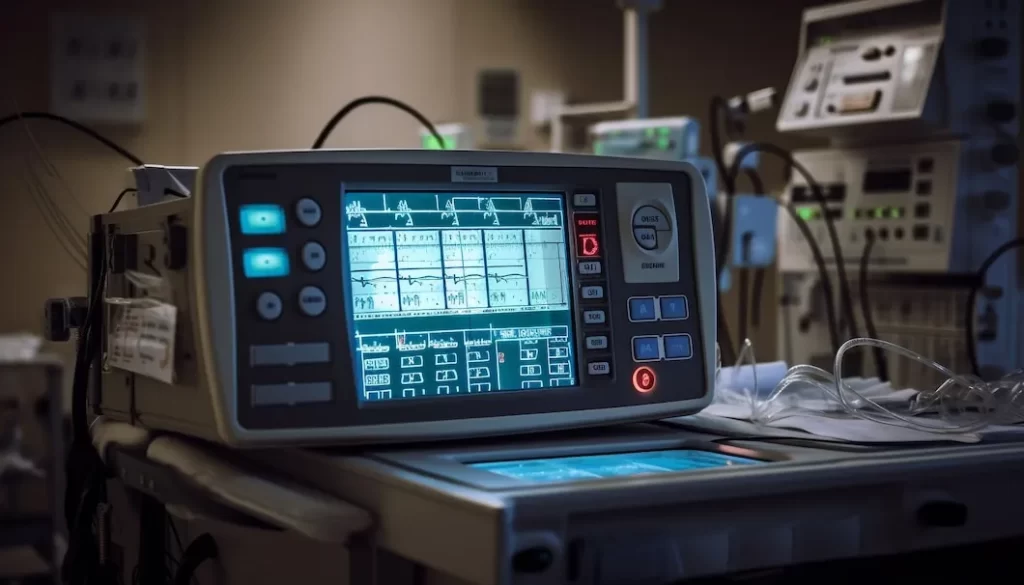
A digital storage oscilloscope is a powerful electronic instrument used to visualize, capture, and analyze electrical signals. Unlike older analog oscilloscopes, digital oscilloscope convert analog signals into a digital format, allowing for storage and detailed analysis.It precisely measures and records electrical signals, making it a vital tool across various disciplines.
Use of Digital Oscilloscope

The digital oscilloscope as an instrument in electronics that is far more limited to observation. Here’s what it can be used as:
- Circuit Design and Troubleshooting:
- Visualizing signal behavior within a circuit.
- Verifying functionality, identifying malfunctions, and pinpointing errors.
- Invaluable for debugging complex circuits, saving development time and effort.
- Capturing Transient Events:
- Powerful diagnostic tool for capturing fleeting and unpredictable transient signals.
- Enables detailed analysis of elusive events, diagnosing intermittent issues.
- Particularly useful in automotive engineering for diagnosing sporadic electrical faults.
Applications Beyond Circuit Analysis

- Telecommunications:
- Testing and debugging communication systems.
- Ensuring signal fidelity for maintaining data integrity in networks.
- Biomedical Engineering:
- Analyzing electrical signals from the human body (heartbeats, brainwaves).
- Crucial for diagnosing medical conditions and monitoring patient health.
- Acoustics and Signal Processing:
- Visualizing audio signals for analyzing sound waves and developing high-fidelity audio equipment.
- Visualizing and analyzing complex signals used in data transmission, control systems, and various applications.
Oscilligoat offers a virtual oscilloscope, a software-based tool that replicates the functionality of a traditional oscilloscope used for visualizing and analyzing electrical signals over time. It caters to learners, professionals, and enthusiasts in various fields, including science, engineering, and audio analysis.
What is a Virtual Oscilloscope?

A virtual digital oscilloscope is a cost-effective and convenient alternative to hardware oscilloscopes. It leverages the processing power and display capabilities of your computer or digital device to simulate the functionality of a traditional oscilloscope.
Oscilligoat goes beyond basic functionalities by offering additional features like:
- Spectrogram: This provides a visual representation of how the frequency content of a signal changes over time.
- Spectrum Analyzer: This helps in precise measurement and display of the frequency spectrum of an input signal.
- Real-time waveform analysis: Analyze signals as they occur.
- Multi-channel support: Analyze up to four signals concurrently for comparisons.
- Fourier analysis: Gain insights into the frequency components of waveforms.
Should You Buy a Digital Oscilloscope?

Whether you need an oscilloscope depends on what you’re up to. If you’re tinkering with simple circuits as a hobbyist or student, a basic, cheaper oscilloscope might do. But if you’re a pro or a serious hobbyist working with complex circuits, you’ll need something beefier.
Things to Consider:
- Your Needs: Think about what kind of signals you’ll be dealing with and how precise you need to be.
- Budget: Oscilloscopes can be pricey, so figure out what you can afford.
- Frequency Range: Different oscilloscopes handle different frequencies, so pick one that matches your needs.
Applications of Oscillogoat

Oscilligoat can cater to a wide range of applications, including:
- Audio Forensics: Analyze intricate details of audio signals like radio, telephone, or speech waves.
- Signal Visualization: Visualize your voice, analyze instrument waveforms, or explore music by frequency.
- Audio Circuit Design: Design audio circuits, measure complex admittances, and assess frequency content.
- Spectrum Analysis: Analyze the frequency spectrum of audio, radio waves, and physiological data.
Supporting a Greater Cause

Oscilligoat is dedicated to advancing science and engineering education globally. Your contributions can help them provide valuable resources, instructional materials, and technical assistance to users worldwide. By donating, you become part of their mission to empower future innovators. Click here to support us now through donation.
